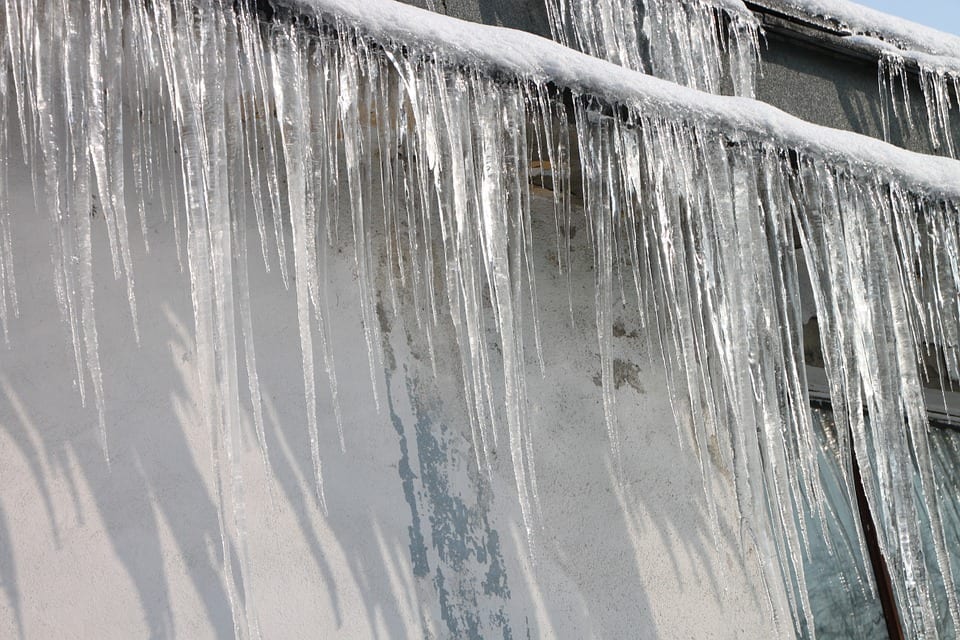 As a ridge of ice, an ice dam will form near the edge of a roof and stops all melting snow from leaking off the side. For the house, this is bad news because it means it can leak through the roof and then cause damage to insulation, ceilings, walls, and more.
As a ridge of ice, an ice dam will form near the edge of a roof and stops all melting snow from leaking off the side. For the house, this is bad news because it means it can leak through the roof and then cause damage to insulation, ceilings, walls, and more.
How? – When people read this, they often ask ‘how?’ and this is a good question. In truth, it all comes down to the heat being lost through the roof, the snow cover, and the temperature outside. If there is snow on the roof, ice dams are likely if heat is escaping the home above 32 degrees (F) and if there are portions of the roof at below freezing. As the melted snow travels down towards the colder sections, it refreezes and forms a dam.
As you can see, the heat escaping from the home is a huge problem but we can also blame solar radiation as this can provide the necessary heat to melt the snow. In the south of Canada, a clear and sunny day will see the sunlight make its way through the snow cover and melt the surface despite the temperatures – as long as the attic temperature is just below freezing.
Over the years, many have said that gutters form the ice dams but this simply isn’t true. However, they do help to concentrate the ice in particular areas. In extreme cases, this concentration can be heavy causing parts of the house to break away and fall to the ground.

.png)

